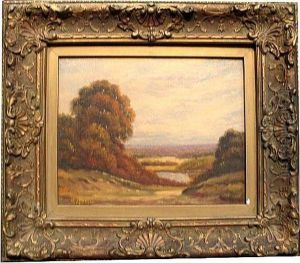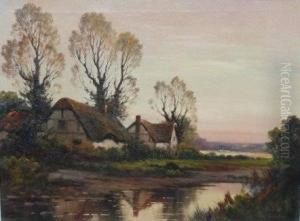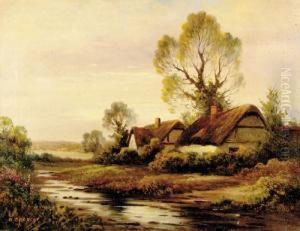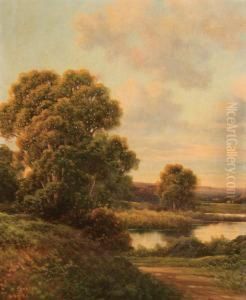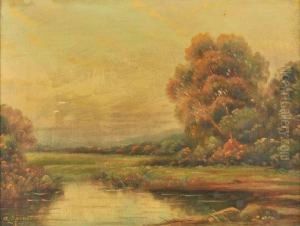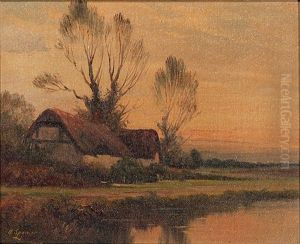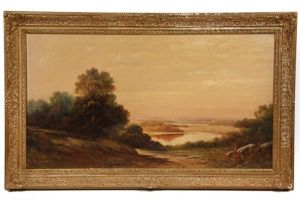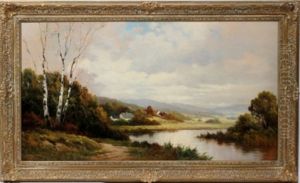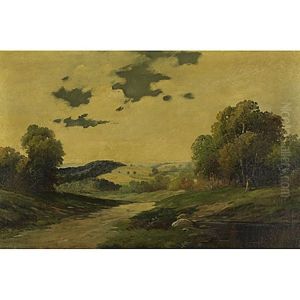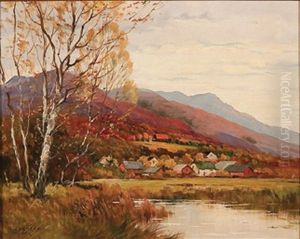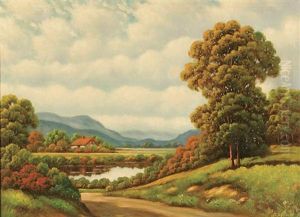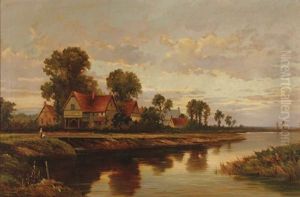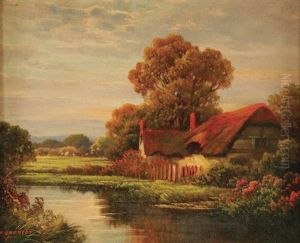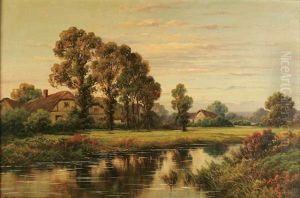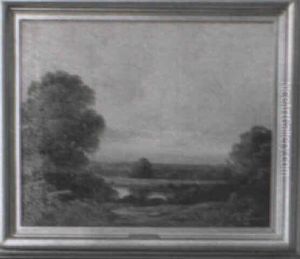Augustus Spencer Paintings
Augustus Spencer was not a widely known artist during his lifetime and remains relatively obscure in the annals of art history. Born in 1860 in England, Spencer was active during a period that saw the Victorian era give way to the Edwardian, and eventually, the tumult of the First World War. His artistic career, therefore, spanned a period of significant social and technological change. Despite these potentially inspiring circumstances, there is limited documentation on his life and work, which makes it challenging to construct a comprehensive biography.
During his lifetime, Spencer would have witnessed the impact of the Industrial Revolution on the British landscape and society, as well as the rise of new artistic movements that challenged traditional Victorian aesthetics. While the Pre-Raphaelites, the Aesthetic Movement, and later the Modernists in Britain were making their mark on art history, Spencer's work did not seem to align closely with any of these dominant trends. This could be one of the reasons why his name is not as prominent as some of his contemporaries.
Spencer’s artistry appears to have been primarily focused on landscape painting, a genre that has a rich tradition in British art. His style was characterized by a naturalistic approach, capturing the British countryside with a sensitivity to light and atmosphere. Unfortunately, because he did not achieve significant fame or notoriety, his works are not well-represented in major public art collections, and thus, they are not as accessible for study and appreciation as those of his more famous peers.
Augustus Spencer passed away in 1924, at the age of 64. The lack of substantial records or a significant body of work has meant that Spencer has not been the subject of extensive art historical research. As a result, our understanding of his contributions to art is limited, and he remains a minor figure in the history of British art. Nonetheless, for those who do encounter his paintings, they offer a quiet and perhaps unassuming glimpse into the landscape tradition of the time.
